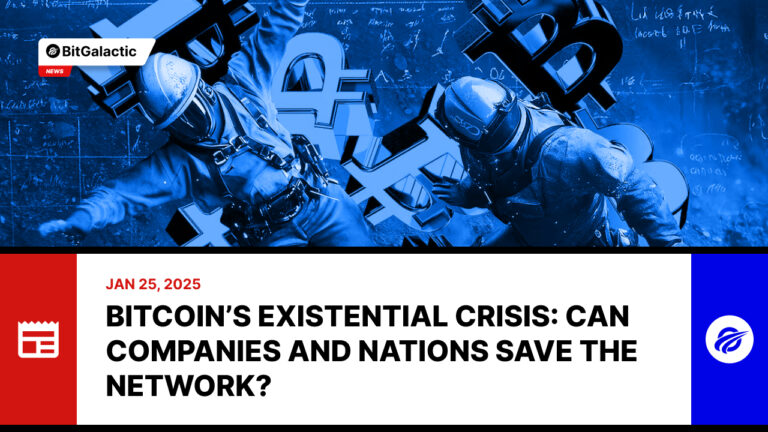Bitcoin’s Existential Crisis: Can Companies and Nations Save the Network?
For over a decade, Bitcoin miners have operated under increasing pressure. While Satoshi Nakamoto’s vision to cap Bitcoin at 21 million units created a deflationary asset, it also introduced an uncomfortable reality: miners are earning less as block rewards diminish over time.
Every four years, Bitcoin undergoes a “halving,” slashing miner rewards in half and making the process of securing the network increasingly unprofitable. This structural challenge has led Fidelity Digital Assets, a prominent player in cryptocurrency investment, to propose a bold — and controversial — solution.
Fidelity’s Bold Fix: Institutional Mining at a Loss
According to Fidelity analysts, corporations and even nations may need to mine Bitcoin at a loss to sustain the network. Fidelity frames this as a necessary “operating cost” for entities that benefit from Bitcoin’s existence, such as those profiting from Bitcoin ETFs, institutional investment, or strategic reserves.
“There are many nations, institutions, and corporations who profit from Bitcoin — and not by mining,” Fidelity stated in its analysis. “Therefore, mining to secure the network could be viewed as an operating cost.”
Fidelity, which already mines Bitcoin, suggests firms like theirs and leading corporate adopters like MicroStrategy could play a role in securing the network in the future.
Pushback from Miners
Not everyone is convinced. Many Bitcoin miners argue this proposal is detached from the harsh economic realities of maintaining the network. Nick Hansen, CEO of Bitcoin mining firm Luxor, criticized the idea as impractical.
“Mining the Bitcoin network costs an estimated $1 million an hour. Is Fidelity willing to front that money? Probably not,” Hansen said in an interview with DL News.
Fidelity, which manages $20 billion in ETF assets, declined to comment on whether it would actively mine Bitcoin at a loss.
An Industry in Flux
The challenges for miners are intensifying. By 2032, Bitcoin’s block reward will fall to less than one Bitcoin per block. While this creates an existential threat for miners, it also raises questions about who will take up the mantle of network security.
Some experts, like Nishant Sharma, founder of BlocksBridge Consulting, predict the role of miners will evolve significantly. “As Bitcoin mining becomes more challenging and less profitable, even with low energy costs, its role is likely to shift in the coming years,” Sharma told DL News.
Strategic Mining: National Security or Futile Expense?
Governments and private entities are now considering whether mining Bitcoin at a loss could serve their strategic interests. Andy Fajar, CEO of Bitcoin mining pool Loka Mining, suggests that mining might become a geopolitical play rather than a profit-driven activity.
“It depends on whether securing the network benefits the nation or enhances strategic positioning,” Fajar said.
However, skeptics like Jameson Lopp, CTO of crypto custodian Casa, believe these theories overstate the risks. Lopp argues that while Bitcoin ETFs may reduce block space demand, innovation within the network can still drive usage and profitability.
“Do ETPs remove demand for block space? Sure,” Lopp said. “But innovative developers can always create new uses for block space, potentially reigniting demand.”
What BitGalactic Thinks
From the perspective of BitGalactic, Fidelity’s proposal raises a provocative question about Bitcoin’s future sustainability. While institutional mining might sound plausible, it hinges on a delicate balance of economic incentives and strategic necessity. Nations and corporations will only step in if the perceived value of Bitcoin — as a store of value, a hedge, or a strategic asset — outweighs the costs of mining.
The next few years will likely see Bitcoin’s security model evolve, shaped by halving events, new technological innovations, and the shifting interests of major players. Whether Fidelity’s vision takes root or alternative solutions emerge, one thing is clear: Bitcoin is entering uncharted territory.
In this shifting landscape, will governments and institutions rise to the challenge, or will Bitcoin miners find ways to adapt independently? The answer may well define the cryptocurrency’s future.
Share this post


